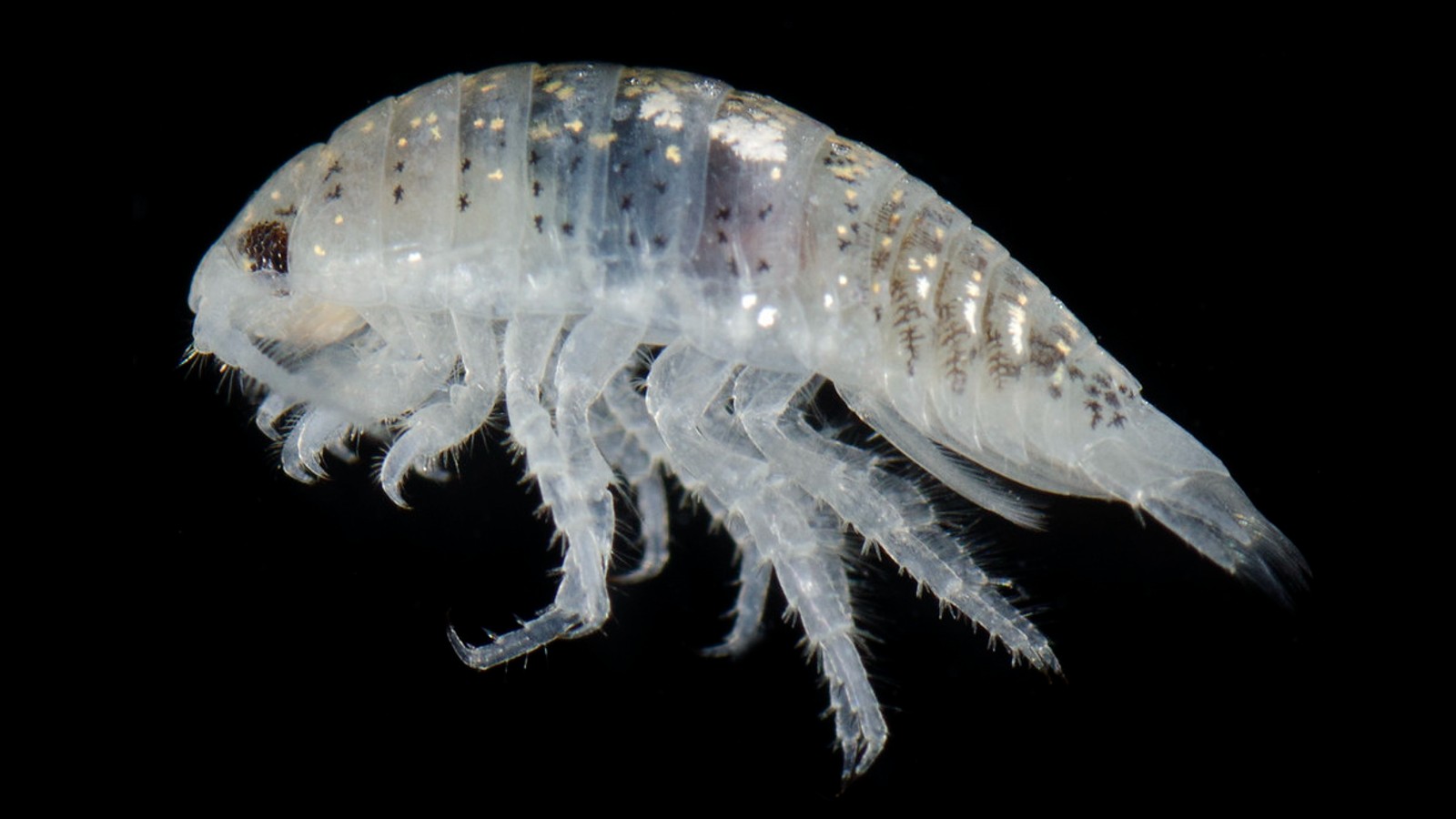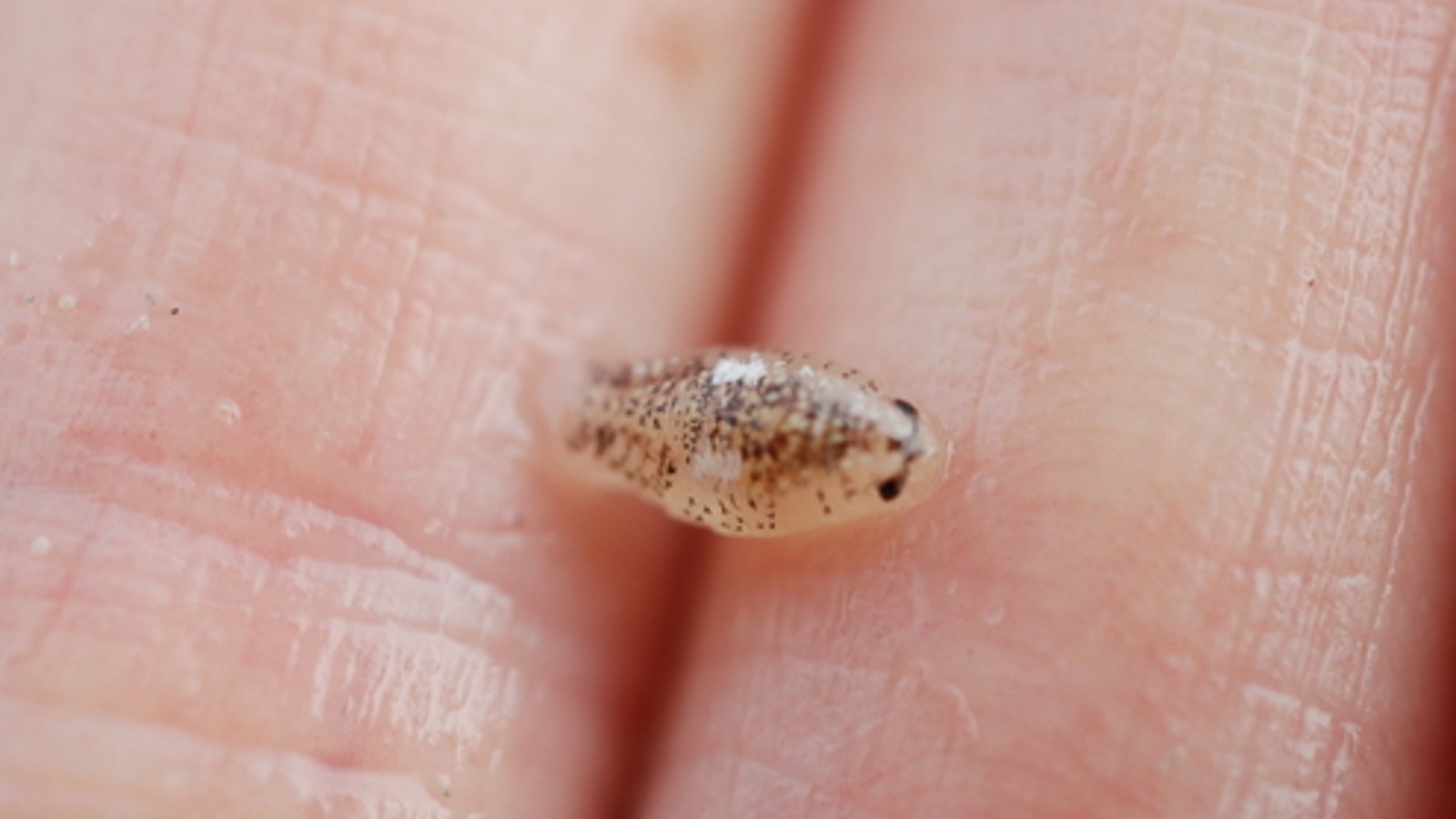Swarms of 'mini-shark' beach bugs are on a foot-biting rampage in California
The toe-chomping critters seem to be unusually numerous and hungry at the moment.

Beachgoers in Southern California are being targeted by swarms of tiny, aggressive sea bugs, previously dubbed "mini-sharks," that seem to have a thing for feet. The shrimplike creatures have been snapping at the ankles of locals promenading along the shoreline, leaving people hopping around in pain, according to local news reports.
Experts identified the biting bugs as water-line isopods (Excirolana chiltoni), a relatively common crustacean species that grows to be around 0.3 inches (0.8 centimeters) long and can form swarms of more than 1,000 individuals, according to Walla Walla University in Washington. The little nippers have a painful bite and can even draw blood from the sandy feet of their human victims, but are not a major cause for concern, scientists say.
On Sunday (Aug. 28), CBS8 San Diego reported biting incidents on beaches near San Diego. Local resident Tara Sauvage, who was bitten by one of the isopods at De Anza Cove in the Mission Bay area of the city, described the experience to CBS8, calling it "painful" and "surprising."
"I had blood all over my foot and in between my toes," Sauvage said. "It was like small piranhas had bit me." But after she rinsed off her feet with water the pain subsided within 15 to 20 minutes, she added.
Related: Hundreds of three-eyed 'dinosaur shrimp' emerge after Arizona monsoon
Isopods belong to an order of woodlouse-resembling crustaceans that include more than 10,000 marine, freshwater and terrestrial species. They range in size from tiny critters like E. chiltoni to massive 10-inch (26 cm) monsters that roam the seafloor.
Water-line isopods are found year-round along the California coastline and on beaches in the Pacific Northwest regions of the United States and Canada. People can be bitten anywhere the tiny critters congregate, and though groups of biting incidents rarely occur consistently in a single area, they do sometimes happen.
Sign up for the Live Science daily newsletter now
Get the world’s most fascinating discoveries delivered straight to your inbox.
For example, in 1993 an increased number of the nipping crustaceans near Newport Beach, California, led to a sharp increase in people being bitten, including an unfortunate 2-year-old girl who ended up with the biting bugs in her diaper, the Los Angeles Times reported at the time.
"They can be pretty nasty when they get going," Richard Brusca, an invertebrate zoologist at the University of Arizona and a former curator of crustaceans at the San Diego Natural History Museum, told the Los Angeles Times in 1993. "They're like mini-sharks" that can attack you "like a wolf pack" but with a bite comparable to that of a mosquito, he added.
However, it is unclear what causes these rare and sudden increases in the abundance of E. chiltoni, Brusca said.

The isopods spend most of their lives buried beneath the sand along the tideline of sandy beaches and typically emerge in shallow water as the tide goes out. When a dead fish or other large carcass washes up, the critters "quickly strip the carcass of flesh" using their serrated mandibles, according to Walla Walla University.
The isopods' ability to quickly gnaw their way through flesh has caused problems in some fish farms where caged fish are unable to shake off the parasites. The ravenous crustaceans can also create issues for forensic pathologists, making it difficult for experts to identify the bodies of drowning victims, according to the website Biodiversity of the Central Coast, a digital field guide to the biodiversity of British Columbia, Canada, maintained by the University of Victoria.
Ichthyologists also use the isopods to strip the flesh from the bones of dead fish in order to study the fishes' skeletons, according to the Los Angeles Times.
Individual isopod bites can bleed and may remain painful for up to several hours, but the wounds are very shallow and usually do not leave any lasting damage. However, large swarms of isopods can sometimes lead to more dangerous encounters.
In 2017, a 16-year-old male from Melbourne, Australia was admitted to the hospital after he was continually bitten by a swarming population of the isopod Cirolana harfordi, which is closely related to E. chiltoni, according to BBC News. The teenager was initially unaware he was being bitten, mistaking the thousands of bites on his feet for pins and needles. After finally stepping out of the water, he realized that the crustaceans had torn swatches of skin from his feet, which would not stop bleeding and "looked like a war injury," according to the BBC.
But such extreme injuries are very unlikely to occur in California as long as people are aware they are being bitten and step out of reach of the isopods' mandibles.
"My recommendation is to not freak out," Ryan Hechinger, a parasite ecologist at Scripps Institution of Oceanography in San Diego who has been bitten by the isopods several times, told CBS8. If bitten, simply get out of the water and remove the isopods if they are still latched on, Hechinger said. It is possible to make the isopods scatter by moving around, but the only way to guarantee you won't be bitten is to stay out of the water, he added.
Originally published on Live Science.

Harry is a U.K.-based senior staff writer at Live Science. He studied marine biology at the University of Exeter before training to become a journalist. He covers a wide range of topics including space exploration, planetary science, space weather, climate change, animal behavior and paleontology. His recent work on the solar maximum won "best space submission" at the 2024 Aerospace Media Awards and was shortlisted in the "top scoop" category at the NCTJ Awards for Excellence in 2023. He also writes Live Science's weekly Earth from space series.









